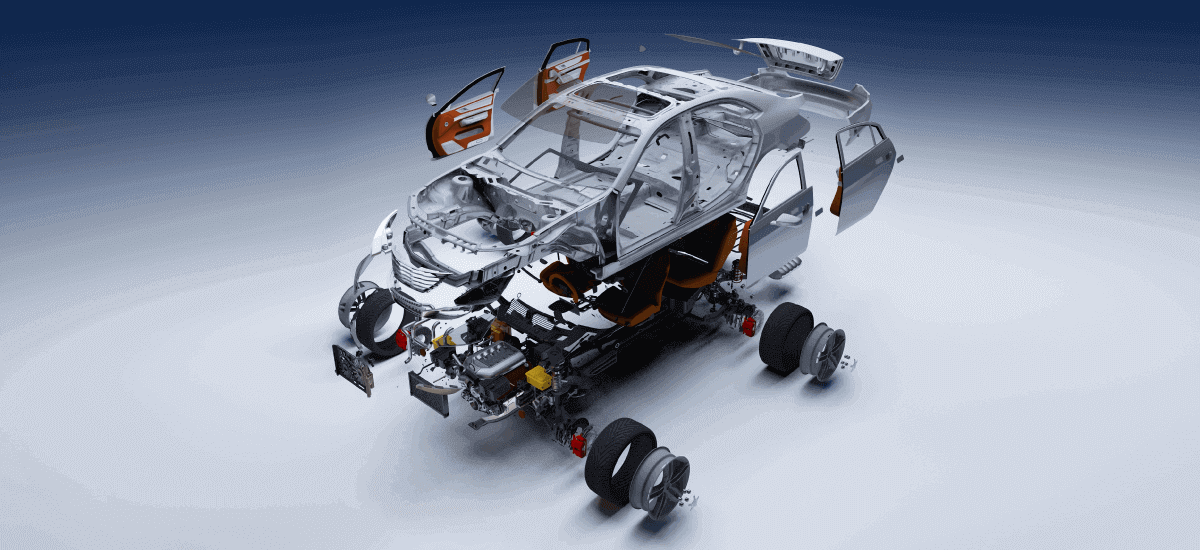Automobile Parts: A Beginner's Guide
Understanding the various parts of an automobile can be daunting for beginners. However, having a basic knowledge of automobile parts is essential for maintaining your vehicle and ensuring its longevity. This guide aims to provide a comprehensive overview of the most important automobile parts, their functions, and how they contribute to the overall operation of a car.

Introduction to Automobile Parts
An automobile is a complex machine composed of numerous parts working in harmony to provide transportation. Each part has a specific role, and understanding these roles can help you troubleshoot problems, perform basic maintenance, and communicate more effectively with mechanics.
1. Engine
The engine is often referred to as the heart of the car. It converts fuel into mechanical energy, which powers the vehicle. Engines come in various types, including internal combustion engines, electric engines, and hybrid engines. The primary components of an engine include:
- Cylinders: The chambers where fuel combustion occurs.
- Pistons: Move up and down within the cylinders to create motion.
- Crankshaft: Converts the piston's up-and-down motion into rotational motion.
- Camshaft: Controls the opening and closing of the engine's valves.
2. Transmission
The transmission is responsible for transferring power from the engine to the wheels. It adjusts the gear ratio between the engine and the drive wheels, allowing the car to operate efficiently at various speeds. There are two main types of transmissions:
- Manual Transmission: Requires the driver to manually shift gears using a clutch and gear stick.
- Automatic Transmission: Automatically shifts gears based on the vehicle's speed and engine performance.
3. Brakes
The braking system is crucial for the safety of the vehicle. It allows the driver to slow down or stop the car. The primary components of the braking system include:
- Brake Pads: Apply pressure to the brake rotors to slow down the vehicle.
- Brake Rotors: Rotating discs that the brake pads clamp onto to create friction.
- Brake Calipers: House the brake pads and apply pressure to the rotors.
- Brake Lines: Transfer hydraulic fluid from the master cylinder to the brake calipers.
4. Suspension System
The suspension system provides a smooth ride by absorbing shocks from the road and maintaining tire contact with the surface. Key components include:
- Springs: Absorb and dissipate energy from road impacts.
- Shock Absorbers: Dampen the movement of the springs.
- Control Arms: Connect the suspension components to the vehicle's frame.
- Ball Joints: Allow for smooth movement of the control arms.
5. Steering System
The steering system enables the driver to control the direction of the vehicle. It includes:
- Steering Wheel: The interface used by the driver to steer the vehicle.
- Steering Column: Connects the steering wheel to the steering mechanism.
- Rack and Pinion: Converts the rotational motion of the steering wheel into the lateral motion needed to turn the wheels.
- Tie Rods: Connect the steering rack to the steering arms.
6. Exhaust System
The exhaust system expels the combustion gases from the engine and reduces harmful emissions. Key components include:
- Exhaust Manifold: Collects gases from the engine cylinders and directs them to the exhaust pipe.
- Catalytic Converter: Reduces harmful emissions by converting them into less harmful substances.
- Muffler: Reduces the noise produced by the exhaust gases.
- Exhaust Pipe: Channels the exhaust gases out of the vehicle.
7. Electrical System
Modern vehicles rely heavily on electrical systems to function. This includes:
- Battery: Provides the initial power to start the engine and powers electrical components when the engine is off.
- Alternator: Charges the battery and powers the electrical system while the engine is running.
- Starter Motor: Cranks the engine to initiate the combustion process.
- Fuses and Relays: Protect the electrical components from damage due to overloads.
8. Cooling System
The cooling system prevents the engine from overheating. It includes:
- Radiator: Dissipates heat from the coolant.
- Water Pump: Circulates coolant through the engine and radiator.
- Thermostat: Regulates the flow of coolant based on the engine's temperature.
- Coolant: A mixture of water and antifreeze that absorbs and dissipates heat.
9. Fuel System
The fuel system delivers fuel to the engine. It consists of:
- Fuel Tank: Stores the fuel.
- Fuel Pump: Transfers fuel from the tank to the engine.
- Fuel Injectors: Spray fuel into the engine's combustion chambers.
- Fuel Filter: Removes impurities from the fuel before it reaches the engine.
10. Drive Axle
The drive axle transfers power from the transmission to the wheels, enabling the vehicle to move. It includes:
- Axle Shafts: Transmit power to the wheels.
- Differential: Allows the wheels to rotate at different speeds while turning.
- CV Joints: Allow for flexibility in the drive axle.
11. Tires and Wheels
Tires and wheels are the vehicle's only contact with the road. Proper maintenance and understanding of their function are crucial for safety and performance. Key aspects include:
- Tire Tread: The patterned part of the tire that makes contact with the road, providing traction.
- Tire Pressure: The amount of air in the tire, which affects handling and fuel efficiency.
- Wheel Alignment: Ensures that the wheels are set to the correct angles to minimize tire wear and ensure proper handling.
12. Body and Frame
The body and frame of the vehicle provide structure and support. They protect the occupants and house the various components of the car. The frame is the main structural component, while the body includes the outer panels, doors, hood, and trunk.
13. Interior Components
The interior of the car includes various parts that contribute to the comfort and convenience of the occupants. These include:
- Seats: Provide seating for the driver and passengers.
- Dashboard: Houses the instrument panel and controls.
- Infotainment System: Includes the radio, GPS, and other entertainment features.
- Climate Control System: Manages the interior temperature and air quality.
14. Lighting System
The lighting system ensures visibility and safety. It includes:
- Headlights: Illuminate the road ahead.
- Tail Lights: Indicate the vehicle's presence and actions to other drivers.
- Turn Signals: Indicate the direction of turns.
- Brake Lights: Signal when the vehicle is slowing down or stopping.
Conclusion
Understanding automobile parts is essential for every car owner. It helps in maintaining the vehicle, identifying issues, and ensuring a longer lifespan for the car. By familiarizing yourself with the basic components and their functions, you can become a more informed and confident driver.


You must be logged in to post a comment.